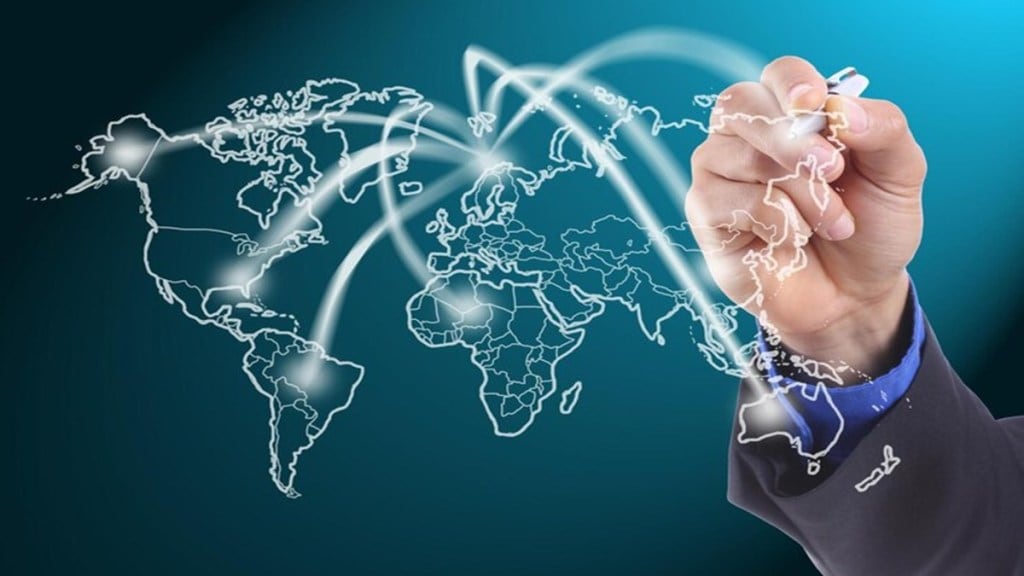By Anita Inder Singh
Multiple wars, conflicting national interests, economic competition with a rising China, the wish of some countries for multi-polarity and beneficial ties with the US under President-elect Donald Trump (who wants to Make America Great Again) will dominate world politics in 2025. The ongoing war in Ukraine, stemming from Russia’s old ambitions, and unresolved enmities in Gaza, Red Sea, Lebanon, Iran, and Syria, have caused humanitarian catastrophes and threatened to break up the existing international order without offering a clue to creating a new one.
Additionally, the US-China rivalry persists, with China challenging the US’ global primacy. China’s rise since 2008 has resulted in a rebalancing of economic, military, and strategic power, but America’s superpower remains intact.
Multipolarity — to which China and emerging economies subscribe — cannot replace the US’ post-1990s position as the sole superpower. Any rising power must contend with both globalisation and “deglobalisation”, supply chains, digital transformation, and artificial intelligence (AI).
China and India share common ground for advocating multipolarity, even as their border dispute remains unresolved. But for New Delhi, there is more to China’s economic and military rise than the problem of it having a far higher gross domestic product (GDP) and GDP per capita.
In part, that is because China’s advances in the areas of science and high technology threaten not only other Asian countries but also the prosperous countries of the European Union (EU). Those advances enhance the phenomenon of “China power”.
China is no longer merely the world’s factory or workshop. It is even challenging the US in technological innovation and design, and in technology areas like AI. These, in turn, are transforming international power equations.
Despite China’s economic sluggishness over the last few years, many foreign companies are returning to China after trying out India. Its ability to develop technological skills that rival those of the US and Europe stem from the fact that unlike India, it has educated its people in the area of manufacturing.
Where does India stand in the frontier and emerging areas of science and technology? Although India is the fifth-largest global economy, its gap in these areas is growing not only with the West, but also China.
Many, but not enough Indians, have a high level of tech skills. As a result, India has failed to keep up with China. This is one of the main reasons why it is hard for India to become a strong and convincing pole in a multipolar world.
At another level, some countries, including India, challenged by the changing world, invoke traditional cultures to claim socio-economic superiority. However, cultures are always in a state of flux from factors as varied as migration to scientific achievements. So, talk of racial or communal superiority of particular communities or countries reflects the orthodox thinking of those who propagate it in the 21st century. For example, backward-looking leaders include Russia’s President Vladimir Putin, who sees himself as the rebuilder of Russia’s 17th-century empire, the victor over decadent Americans on the battlefield in Ukraine, and more influential in Europe than the US.
Significantly, when China’s President Xi Jinping states, “The East is rising”, he means China, not the rest of Asia — and certainly not India.
The democratic US is the only country that can counter China in the scientific and AI-driven technological innovation while maintaining a free and open world order. That is why most countries prefer to have the US as the world leader, whatever their differences may be with it.
The US economy and its GDP continue to rise and China’s equality with it remains on an infinite horizon, as does India’s wish for equality with China.
Russia and China are actually vulnerable because the repute of dictators abroad depends mostly on their economic strength and military adventures. The outcome of Putin’s Ukrainian war is unclear. And there are fears among Southeast Asian countries that China’s economic slowdown could spur it to embark on an analogous gamble in Taiwan.
Ukraine also has significance for Asia. China is a party to the conflict through its military support for Putin’s war. Beijing would view his defeat as a defeat for China. But Southeast Asian countries, threatened by China’s territorial expansionism, see Ukraine as a test of the US commitment to allies and its willingness to counter China.
Trump, in his second innings, will therefore find that he cannot MAGA if he follows an isolationist foreign policy. The US’ superpower is the only counterpoise to expansionist China and Russia.
As Trump prepares to take office, the US economy has the highest growth. Its leadership in finance and AI is unchallenged. This economic news reinforces the international perception of its superpower.
Trump 2.0 should realise that developing countries want greater access to American technology and markets. Meanwhile, lacking military strength of their own, European allies are dependent on the US’ military capabilities and want it to reach an agreement with Russia in Ukraine from a position of strength.
The problem is not Trump’s transactional approach, the question is what he will do with that approach and with the US’ economic strength to help its friends — while also putting China and Russia at a disadvantage.
Like several countries, India hopes that Trump will not harm their interests with MAGA’s protectionist edges. Generally, emerging economies will need to find new ways of dealing with an America with which they often disagree but want good relations and friendship. This year will show what India can do to strengthen its ties with the US to advance its own national and international interests.
The writer is founding professor, Centre for Peace and Conflict Resolution, New Delhi.
Disclaimer: Views expressed are personal and do not reflect the official position or policy of FinancialExpress.com. Reproducing this content without permission is prohibited.

